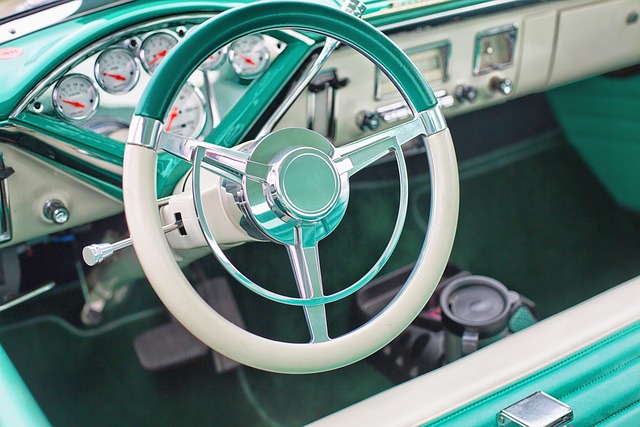As electric vehicles (EVs) accelerate into mainstream mobility, the demand for bespoke instrument panel solutions has surged. Engineers now face the challenge of merging advanced battery monitoring, driver assistance interfaces, and aesthetic harmony into a single cockpit experience. An instrument panel design service that offers modular, data‑rich displays and ergonomic layouts can dramatically shorten development cycles while delivering a futuristic look that resonates with tech‑savvy consumers. By harnessing rapid prototyping, 3D visualization, and collaborative design workflows, these services empower automakers to craft interiors that are not only functional but also a statement of brand identity.
Why Traditional Design Falls Short
Conventional instrument panels were built around combustion engines: tachometers, fuel gauges, and mechanical indicators. Those elements no longer serve the battery‑powered paradigm. The static dashboards of the past lack the dynamic data streams needed to inform drivers about range, regenerative braking, and power consumption. Moreover, the rigid manufacturing processes that produced those panels left little room for rapid iteration. When electric powertrains introduced variable voltage levels and new safety protocols, designers found themselves scrambling to retrofit existing templates. This mismatch created wasted time, elevated costs, and compromised user experience.
Key Design Drivers for EV Cockpits
Modern electric car interiors demand a fresh approach. The following elements define the success of an instrument panel design service for EVs:
- Real‑time telemetry: Instant feedback on battery health, energy flow, and thermal management.
- Driver‑centered ergonomics: Controls and displays positioned for natural reach and minimal distraction.
- Scalable architectures: Modular hardware that accommodates future software updates and new vehicle models.
- Sustainability focus: Use of recyclable materials and low‑power displays to align with the EV eco‑mission.
Integrated Digital Ecosystem
At the heart of an instrument panel design service lies the integration of a digital ecosystem. Engineers now rely on high‑resolution touchscreens, OLED panels, and augmented reality overlays that provide context‑aware information. These technologies must coexist with the vehicle’s central computer, ensuring that data such as state‑of‑charge, route optimization, and driver alerts are seamlessly presented. The design service must therefore coordinate with software teams, establish API contracts, and validate signal integrity across the vehicle’s CAN bus and newer Ethernet networks.
Prototyping and Validation Workflow
Rapid prototyping transforms abstract concepts into tangible dashboards:
- Concept sketches and user stories are translated into 3D CAD models.
- Simulated displays are embedded within virtual reality environments for ergonomic testing.
- Hardware‑in‑the‑loop tests verify sensor accuracy and visual latency.
- Iterative feedback loops between design, engineering, and user groups refine the final product.
Case Study: A Mid‑Range EV Platform
Consider a mid‑size electric sedan that required a 15‑inch central display and a side‑panel for controls. The instrument panel design service proposed a dual‑layer architecture: a primary touch interface for navigation and media, and a secondary ambient display for battery metrics. Using a modular PCB stack, the team could swap out the primary display without re‑engineering the surrounding chassis. The result was a 30% reduction in assembly time and a 25% lower component cost compared to a bespoke, single‑purpose panel.
Software Integration Highlights
The success of the project hinged on a few software integration strategies:
- Adoption of a microservices framework that isolated vehicle data streams.
- Implementation of a secure OTA update mechanism to roll out new features.
- Use of a standardized HMI language (e.g., QML) to ensure cross‑platform consistency.
Materials and Sustainability
Designing for the electric future requires more than just electronics; the choice of materials is equally critical. Instrument panel design services are now favoring bio‑based composites, recycled aluminum, and low‑VOC plastics. By selecting materials that meet stringent crash safety standards yet reduce environmental impact, manufacturers can position their EVs as true green products. Moreover, the service includes lifecycle assessment tools that quantify carbon footprints from raw material extraction to end‑of‑life recycling.
Future‑Proofing the Interior
As autonomous driving becomes mainstream, dashboards will transition from driver controls to informational displays. An instrument panel design service anticipates this shift by incorporating:
- Dedicated space for AR overlays that project navigation cues onto the windshield.
- Adaptive lighting that syncs with ambient environment for reduced eye strain.
- AI‑powered predictive analytics that anticipate driver behavior and adjust UI accordingly.
Conclusion: Empowering Engineers Through Collaboration
The evolution of the instrument panel in electric cars mirrors the broader transformation of the automotive industry. Engineers are no longer confined to static blueprints; they are collaborating with design services that merge cutting‑edge electronics, human‑centered ergonomics, and sustainable manufacturing. This partnership shortens time‑to‑market, reduces costs, and delivers a cockpit experience that feels intuitive, futuristic, and environmentally responsible. As the electric revolution accelerates, the instrument panel design service stands as a cornerstone for modern engineers seeking to create interiors that are as efficient and clean as the powertrains they support.




